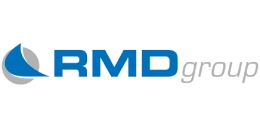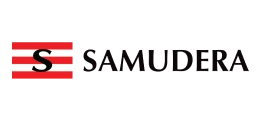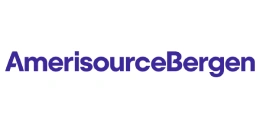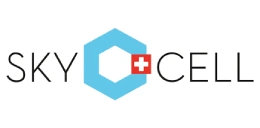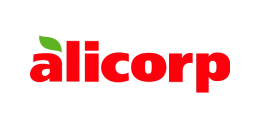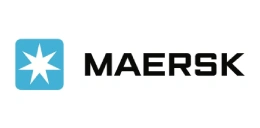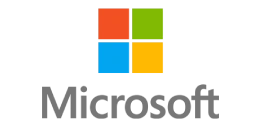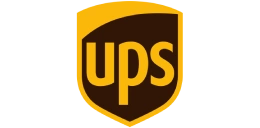Aluminum Anodizing Cost Model: Profitability Tracker
_11zon.webp)
Aluminum anodizing is an electrochemical process that improves the surface characteristics of aluminum by creating a long-lasting, corrosion-resistant oxide coating on its surface. In contrast to coatings or paint applied to the outside surface, anodizing makes the outer surface of aluminum into a protective aluminum oxide coating that is bonded integrally to the metal and will last long and stay adherent. This treatment not only enhances resistance to wear, corrosion, and environmental degradation but also leaves behind a highly aesthetic finish that can be colored or textured for functional and decorative uses. Anodized surface is also harder than the natural aluminum, presenting additional protection for parts subject to mechanical stress or tough environments. Aluminum anodizing falls into three broad categories—Type I (chromic acid anodizing), Type II (sulfuric acid anodizing), and Type III (hard anodizing), which vary in coating thickness, hardness, and suitability of application. Type II is commonly employed for architectural, consumer electronic, and cookware applications because it is a good balance between protection and appearance, whereas Type III is preferred for aerospace and industrial machine applications where high hardness is necessary. Anodized aluminum also possesses superior thermal and electric insulation characteristics and hence is utilized in high-performance engineering. Additionally, it is ecologically friendly in nature, as anodizing is free from volatile organic compounds (VOCs) and makes recycling easier for aluminum. Given its durability, design flexibility, and eco-friendliness, aluminum anodizing has emerged as a critical finishing technique in industries like automotive, construction, aerospace, electronics, and household goods. The global aluminum anodizing market reached a value of USD 656.2 Million in 2024. According to IMARC Group, the market is projected to reach USD 992.1 Million by 2033, at a projected CAGR of 4.5% during 2025-2033. The worldwide market for aluminum anodizing is dominated by the increasing need for corrosion-resistant and long-lasting aluminum parts in various end-use industries like construction, automotive, aerospace, and electronics. Construction is among the highest-volume consumers of anodized aluminum, with its usage in architectural facades, window systems, curtain walls, and ornamentation panels on account of its durability and stylistic versatility. The aerospace and automotive sectors are also significant drivers of growth since anodized aluminum offers wear-resistant, but light, components that save fuel and increase the lifespan of parts. In consumer electronics, the increased use of modern, metallic finishes in smartphones, laptops, and home appliances continues to drive demand for anodized surfaces. Another driver of the market is environmental sustainability. The anodizing process itself is nontoxic, energy-conserving, and yields recyclable products, and this aligns with world-wide sustainability and circular economy objectives. Additionally, anodizing chemistry technology advances such as better sealing technologies, environmentally friendly electrolytes, and automation are increasing process yield and quality. Increased use of renewable energy and electric vehicle (EV) production has extended the use of aluminum anodizing further into battery housing, solar panels, and structural applications. Moreover, growing urbanization and infrastructure growth in emerging markets like India, China, and Southeast Asia are driving demand for anodized aluminum both in residential and commercial developments. Generally, the industry growth is driven by the convergence of durability needs, appearance desires, and worldwide sustainability efforts, making aluminum anodizing a fundamental procedure within contemporary materials finishing.
Trending Insights on Aluminum Anodizing: Latest News and Developments:
- In March 2025, Idas increased service availability in its area by commissioning a new anodising plant that can handle hard and natural anodising for large pieces (up to approximately 1500 x 800 x 400 mm).
- In December 2024, the Aluminium Association of India (AAI) has called for higher import duties to strengthen trade protections. This move is aimed at supporting India’s domestic downstream aluminum industry by enhancing market opportunities and promoting a more self-reliant aluminum manufacturing ecosystem.
- In October 2024, MISUMI Group Inc.’s innovative parts procurement platform, Meviy, has expanded its sheet metal services by introducing anodized aluminum (pre-finished) sheets. This addition is designed to improve convenience and efficiency for customers sourcing precision metal components.
Case Study on Cost Model of Aluminum Anodizing Plant:
One of our clients reached out to us to conduct a feasibility study for setting up a medium scale aluminum anodizing plant. We developed a comprehensive financial model for the setup and operation of a proposed aluminum anodizing plant in India. This plant is designed to process 1,500 tons of aluminum anodizing annually.
Processing Flow: The anodizing of aluminum is an electrochemical surface treatment method that is aimed at providing durability, corrosion resistance, and beauty to aluminum products. Anodizing is preceded by surface preparation where the aluminum part is degreased, alkaline washed, and acid etched to eliminate dirt, oils, and oxides, thus providing a uniform surface activation. After being cleaned, the component is rinsed and submerged in an electrolytic bath, usually sulfuric acid, but oxalic or chromic acid can be utilized based on the desired properties of the coating. Within this bath, the aluminum piece is the anode, and a conductive cathode (usually lead or stainless steel) closes the circuit. Upon the application of an electrical current, oxygen ions within the electrolyte react with the aluminum atoms on the surface to create a highly bonded aluminum oxide layer. This oxide layer is porous and thickness-controllable, typically between 5 to 25 microns for decorative anodizing and up to 100 microns for hard anodizing purposes. After anodization, the part may be colored, wherein dyes or metal salts are taken into the pores to obtain such finishes as required. The process then ends with sealing, wherein pores are closed by hot water, steam, or nickel acetate treatment in order to seal color and improve corrosion resistance. The surface obtained is considerably harder than bare aluminum, wear-resistant, and accepting of decorative finishes. Aluminum anodizing is extensively employed in architectural facades, consumer goods, cookware, automotive and aerospace parts, to marry functionality, appearance, and long-term protection.
_11zon.webp)
Raw Material Required:
The basic raw materials required for aluminum anodizing include:
- Sulphuric Acid
- Sodium Hydroxide
- Dyes and Pigments
- Chemical Sealant
- Deionized Water
Machineries Required:
- Degreasing Tanks
- Ultrasonic Cleaning Tanks
- Rinse Tanks with DI Water
- Spray/Immersion Washers
- Etching Tanks with Temperature Control
- Rinse Tanks
- Desmutting Tanks
- Anodizing Tank
- Rectifier
- Cooling System
- Agitation System
- Racks / Fixtures / Cathodes
- Coloring Tanks
- Heating System
- Hot Water / Chemical Sealing Tanks with Temperature Control System
- Rinse Tanks
- Hot Air-Drying Oven
- Compressed Air Blowers
- Coating Thickness Gauges
- Salt Spray/ Corrosion Testing Chamber
- Spectrophotometer
Techno-Commercial Parameter:
- Capital Expenditure (CapEx): Capital expenditure (CapEx) in a processing plant includes various investments essential for its setup and long-term operations. It covers machinery and equipment costs, including procurement, installation, and commissioning. Civil works expenses involve land development, factory construction, and infrastructure setup. Utilities such as power, water supply, and HVAC systems are also significant. Additionally, material handling systems, automation, environmental compliance, and safety measures are key components. Other expenditures include IT infrastructure, security systems, and office essentials, ensuring operational efficiency and business growth.
- Operating Expenditure (OpEx): Operating expenditure is the cost incurred to operate a processing plant effectively. Opex in a processing plant typically includes the cost of raw materials, utilities, depreciation, taxes, packing cost, transportation cost, and repairs and maintenance. The operating expenses are part of the cost structure of a processing plant and have a significant effect on profitability and efficiency. Effective control of these costs is necessary for maintaining competitiveness and growth. Furthermore, raw material cost in an aluminum anodizing plant ranges between 50-60%, utility cost ranges between 20% to 25%, and all other costs ranges between 15-30% in the proposed plant.
- Profitability Analysis Year on Year Basis: We assisted our client in developing a detailed cost model, which projects steady growth, with revenue rising throughout the projected period. Moreover, gross profit margins lie between a range of 15-20%, and net profit lie between the range of 10-15% during the income projection years, highlighting strong financial viability and profitability.
Conclusion:
Our financial model for the aluminum anodizing plant was meticulously developed to meet the client’s objectives, providing an in-depth analysis of production costs, including raw materials, processing, capital expenditure, and operational expenses. By addressing the specific requirements of processing 1,500 tons of aluminum by anodizing annually, we successfully identified key cost drivers and projected profitability, considering market trends, inflation, and potential fluctuations in raw material prices. This comprehensive financial model equipped the client with valuable insights into strategic decision-making, demonstrating our commitment to delivering high-quality, client-focused solutions that ensure the long-term success of large-scale processing ventures.
IMARC's Financial Model Expertise: Helping Our Clients Explore Industry Economics:
IMARC is a global market research company that offers a wide range of services, including market entry and expansion, market entry and opportunity assessment, competitive intelligence and benchmarking, procurement research, pricing and cost research, regulatory approvals and licensing, factory setup, factory auditing, company incorporation, incubation services, recruitment services, and marketing and sales.
Under our factory setup services, we assist our clients in exploring the feasibility of their plants by providing comprehensive financial modeling. Additionally, we offer end-to-end consultation for setting up a plant in India or abroad. Our financial modeling includes an analysis of capital expenditure (CapEx) required to establish the processing facility, covering costs such as land acquisition, building infrastructure, purchasing high-tech production equipment, and installation. Furthermore, the layout and design of the factory significantly influence operational efficiency, energy consumption, and labor productivity, all of which impact long-term operational expenditure (OpEx). So, every parameter is covered in the analysis.
At IMARC, we leverage our comprehensive market research expertise to support companies in every aspect of their business journey, from market entry and expansion to operational efficiency and innovation. By integrating our factory setup services with our deep knowledge of industry dynamics, we empower our clients to not only establish processing facilities but also strategically position themselves in highly competitive markets. Our financial modeling and end-to-end consultation services ensure that clients can explore the feasibility of their plant setups while also gaining insights into competitors' strategies, technological advancements, and regulatory landscapes. This holistic approach enables our clients to make informed decisions, optimize their operations, and align with sustainable practices, ultimately driving long-term success and growth.
Our Clients
Contact Us
Have a question or need assistance?
Please complete the form with your inquiry or reach out to us at
Phone Number
+91-120-433-0800+1-201-971-6302
+44-753-714-6104
